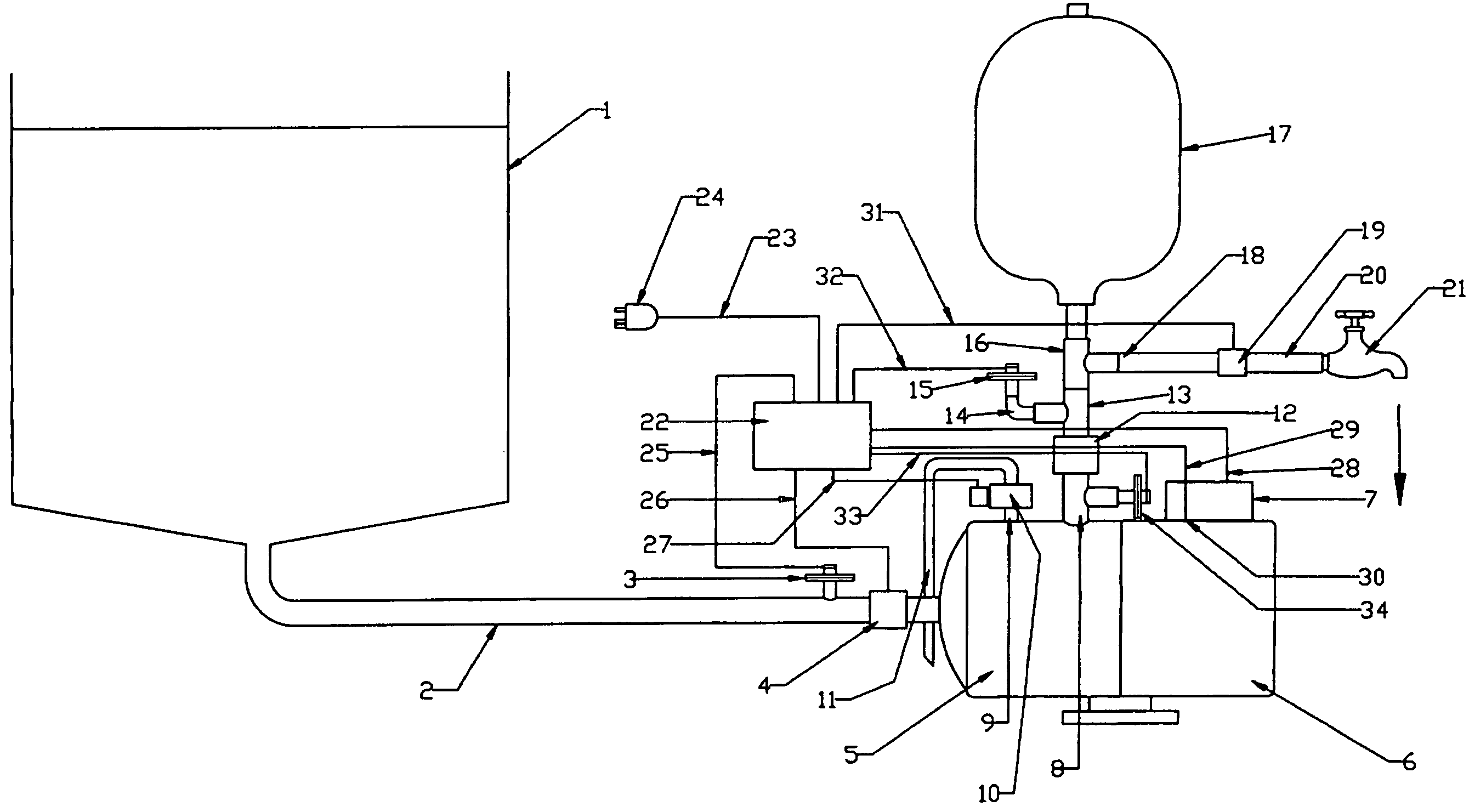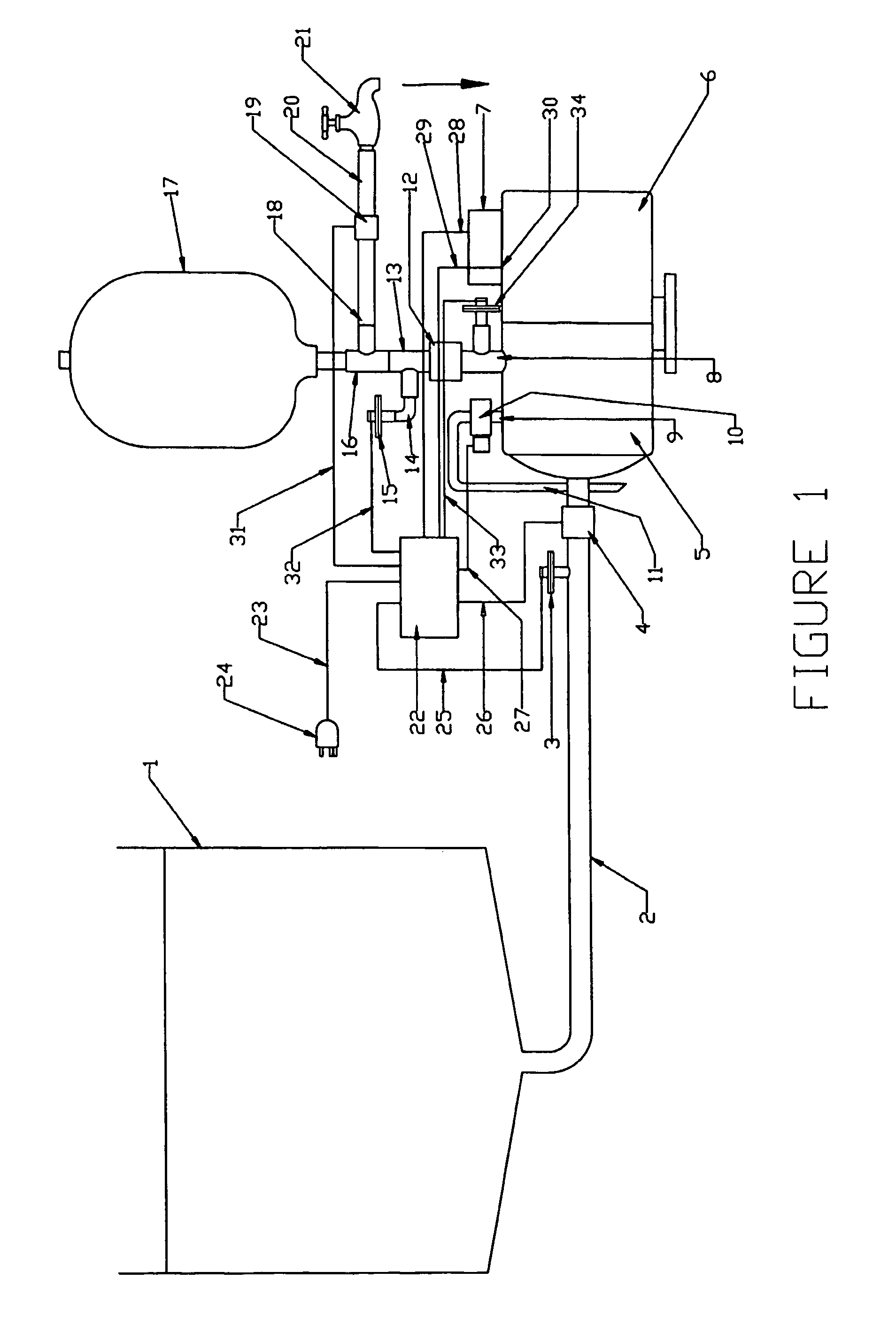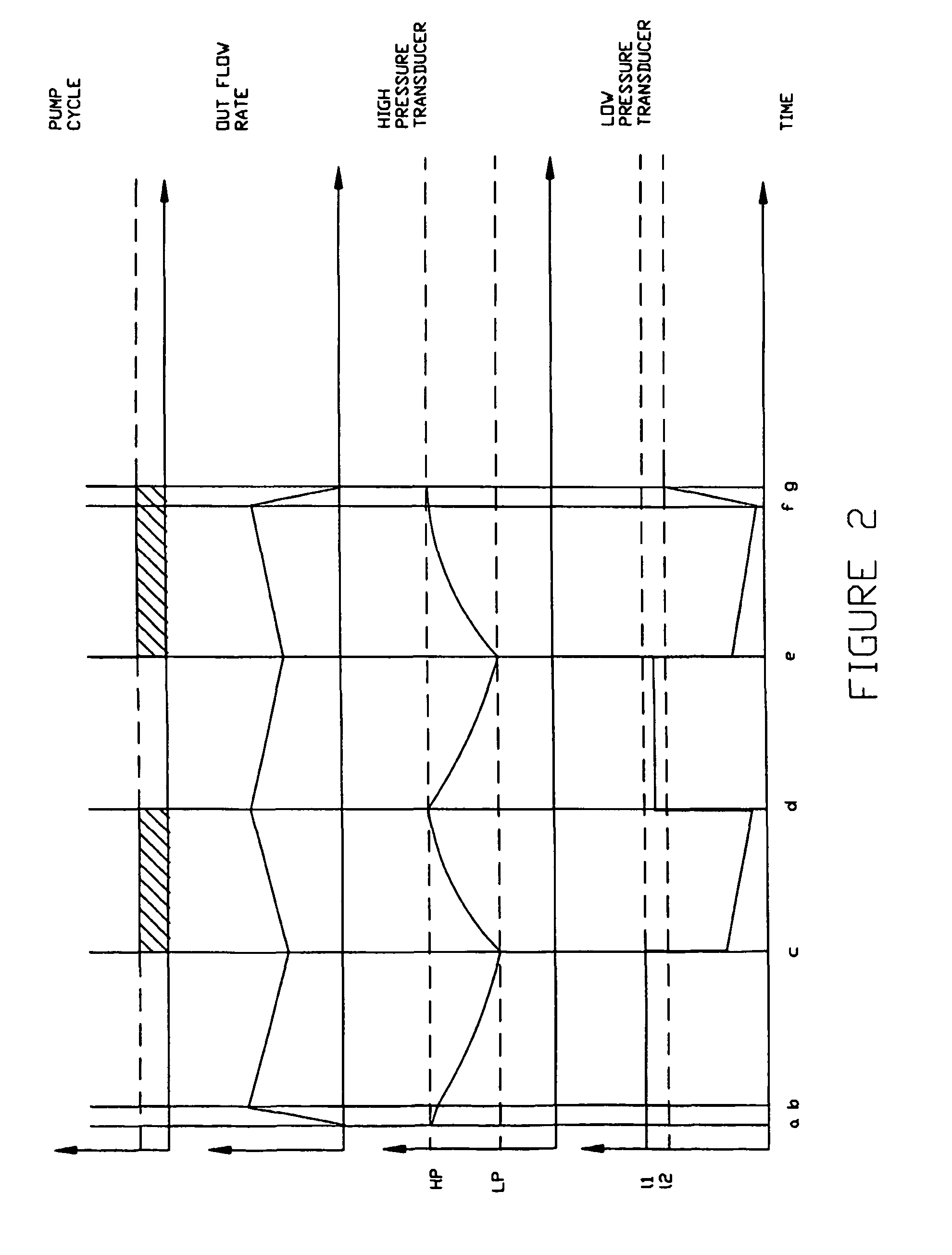Pump control system
a control system and pump technology, applied in the direction of pump control, non-positive displacement fluid engine, pump control, etc., can solve the problems of poor priming characteristics of pumps, high cost of providing such a sensor that is accurate at a range of flows, and may not be economically practical in many applications. , to achieve the effect of reducing pressure fluctuation and ensuring the accuracy of flow
- Summary
- Abstract
- Description
- Claims
- Application Information
AI Technical Summary
Benefits of technology
Problems solved by technology
Method used
Image
Examples
Embodiment Construction
[0041]FIG. 1 is a schematic drawing of the components of a pump system according to one embodiment of the invention. Shown is a reservoir in the form of a tank (1) with an outlet to conduit (2). Attached via a port to this conduit (2) are a pressure transducer (3) and an optional flow meter (4). The conduit (2) feeds liquid into a pump (5), shown as a centrifugal type pump, which is driven by an electric motor (6) equipped with a terminal box (7). This particular pump (5) is of a centrifugal type with a main outlet port (8) and de-airing port (9). The purpose of the de-airing port (9) is normally to manually bleed air out of the pump impeller housing. This port is normally blocked. Above the main outlet port (8) is a non-return valve (12). It should be appreciated that pumps not fitted with de-airing port (9) could equally well be bled of air by the fitting of a tee between the main outlet port (8) and the non-return valve (12). This tee would be connected to a de-airing valve. In t...
PUM
 Login to View More
Login to View More Abstract
Description
Claims
Application Information
 Login to View More
Login to View More - R&D
- Intellectual Property
- Life Sciences
- Materials
- Tech Scout
- Unparalleled Data Quality
- Higher Quality Content
- 60% Fewer Hallucinations
Browse by: Latest US Patents, China's latest patents, Technical Efficacy Thesaurus, Application Domain, Technology Topic, Popular Technical Reports.
© 2025 PatSnap. All rights reserved.Legal|Privacy policy|Modern Slavery Act Transparency Statement|Sitemap|About US| Contact US: help@patsnap.com



